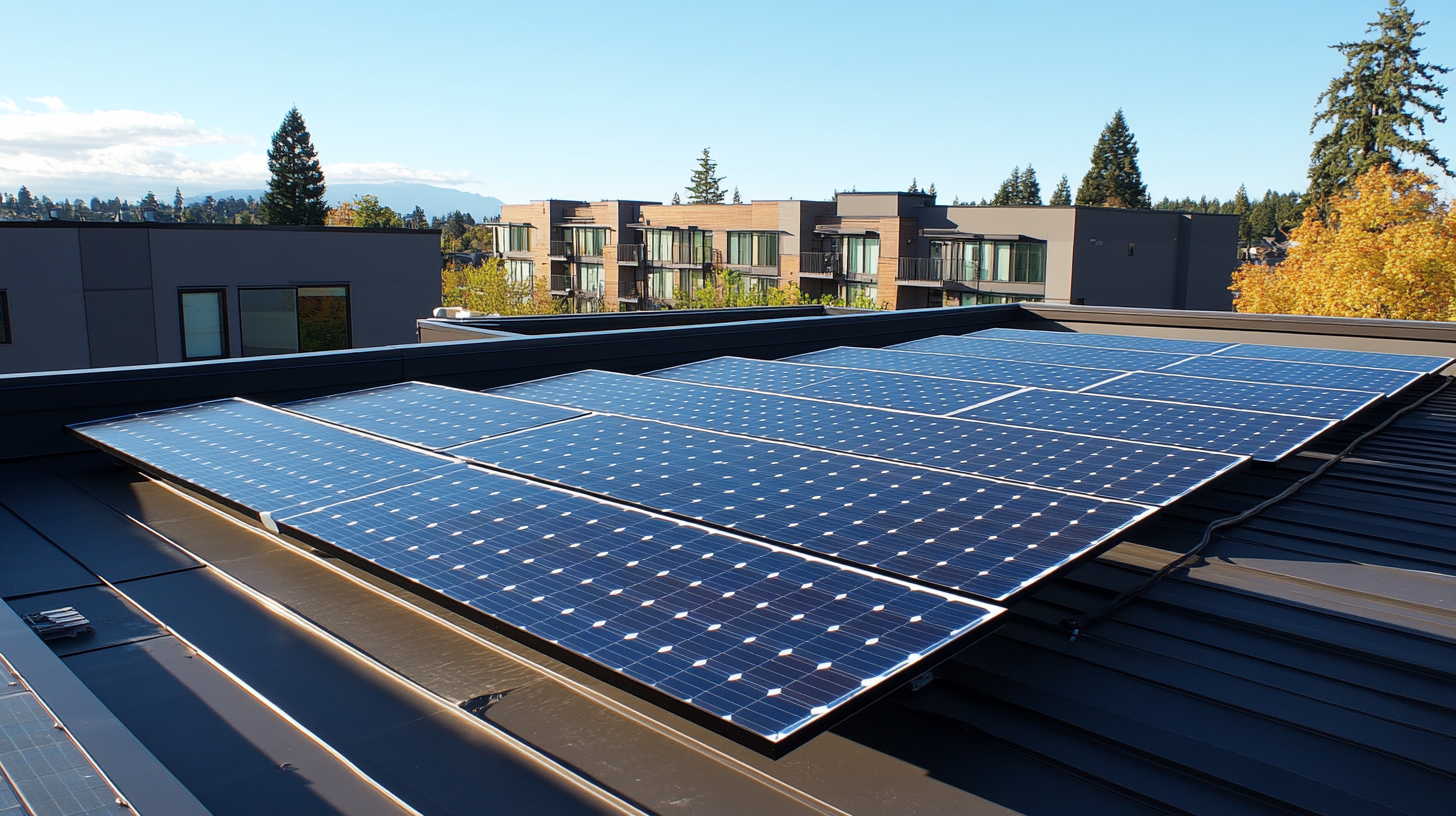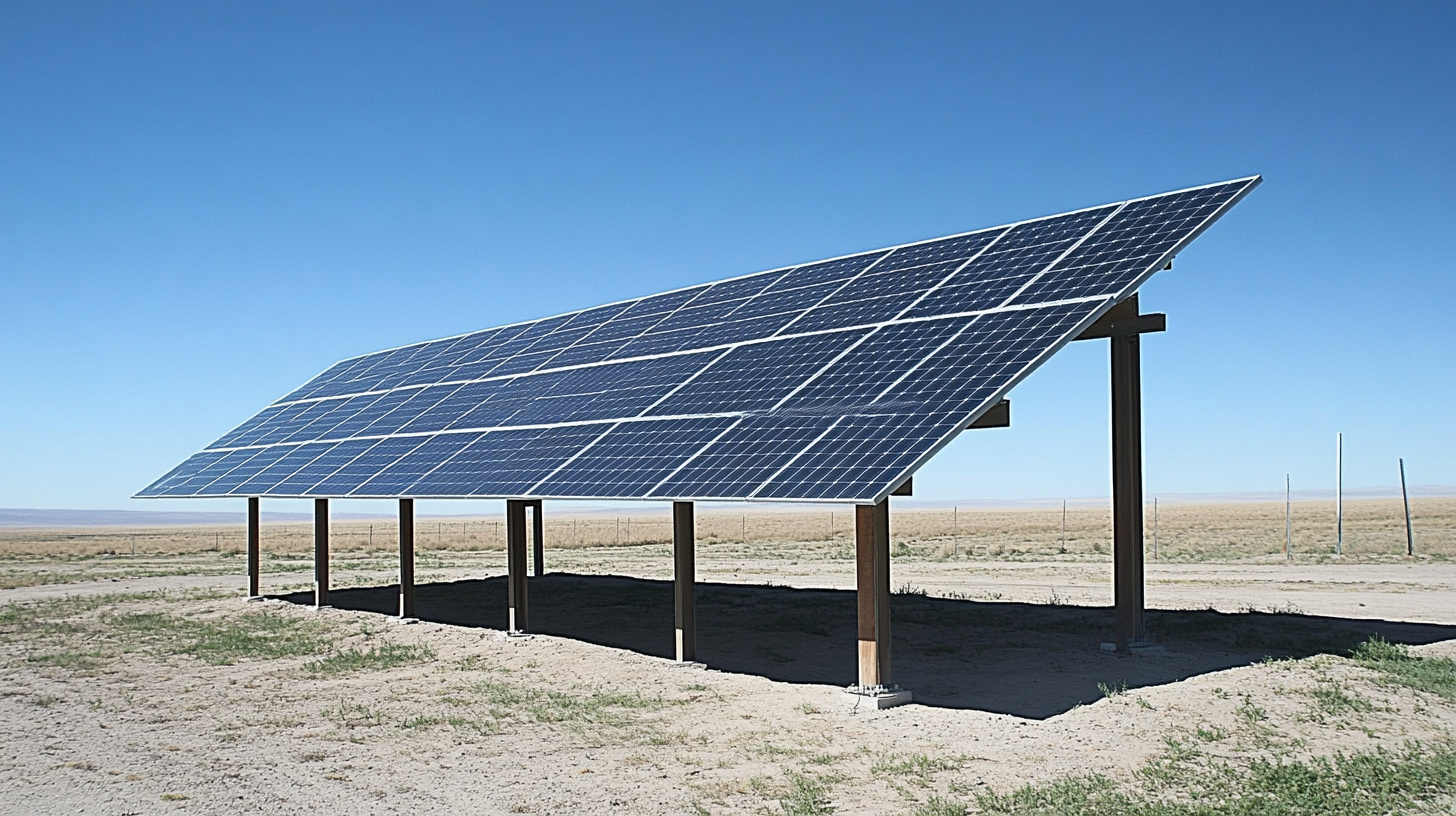Revolutionizing Global Energy Markets with Solar Installations and Sustainable Solutions
In the face of escalating climate concerns and the urgent need for sustainable energy solutions, the global energy landscape is undergoing a transformative shift. At the forefront of this revolution are solar installations, which are not only reshaping how we generate electricity but also redefining energy accessibility and independence. By harnessing the power of the sun, these installations provide clean energy alternatives that can meet the growing demands of industries and households alike, while significantly reducing carbon emissions.
As nations strive to achieve their sustainability goals, solar installations emerge as a key player in the transition towards a greener future. Their proliferation across various markets is spurred by technological advancements and decreasing costs, making solar energy more accessible than ever. This blog will explore how these innovative solutions are disrupting traditional energy markets, fostering competition, and encouraging investment in renewable technologies, thereby paving the way for a sustainable global energy economy.

The Rise of Solar Energy: Transforming Global Energy Landscapes
The rise of solar energy is reshaping the dynamics of global energy landscapes, providing a sustainable alternative to traditional fossil fuels. As nations grapple with the escalating impacts of climate change, the push for renewable energy sources has never been more urgent. Solar installations are becoming a pivotal technology in this transition, harnessing the abundant energy from the sun to power homes, businesses, and even entire cities. This shift not only promises to reduce greenhouse gas emissions but also enhances energy security and creates countless jobs in the green economy. Global investments in solar energy have surged, driven by technological advancements and decreasing costs of solar panels. Countries that once relied heavily on oil and coal are now embracing solar farms, rooftop systems, and innovative energy solutions to diversify their energy portfolios. The rise of solar energy is also democratizing access to electricity, particularly in remote and underserved areas. With off-grid solar solutions, communities that were once left in darkness are now lighting their homes and powering their schools and health clinics, fostering development and improving quality of life. Moreover, the integration of solar energy into existing energy markets is paving the way for smarter, more resilient infrastructures. As utilities invest in solar integration technologies and energy storage solutions, they are enabling a more flexible and efficient grid. This transformation is not just a technical shift; it represents a fundamental change in how energy is produced, consumed, and valued in society. Consequently, as solar energy continues to flourish, it bridges traditional divides and offers a collaborative framework for countries to work together toward a sustainable future.

Innovative Technologies Driving Solar Installation Growth
Innovative technologies are transforming the landscape of solar installations, propelling them into the forefront of global energy markets. With advancements in solar panel efficiency, energy storage solutions, and smart grid technologies, the feasibility and appeal of solar energy continue to rise. The development of bifacial solar panels, which capture sunlight on both sides, has significantly increased energy yield and reduced costs, making solar installations more attractive to consumers and businesses alike.
Moreover, the introduction of energy management systems that leverage artificial intelligence is optimizing energy consumption patterns and improving the overall efficiency of solar installations. These systems analyze data in real-time, adjusting energy use based on solar generation and grid demands, ultimately enhancing the effectiveness of renewable energy. As energy storage technologies like lithium-ion and emerging solid-state batteries evolve, they enable users to store excess energy generated during peak sunlight hours, thus ensuring a steady supply even when conditions are less favorable.
Additionally, innovations in installation techniques, such as modular and tiltable solar systems, are simplifying the deployment of solar technology in varied environments. These advancements not only reduce installation time and labor costs but also allow for greater adaptability to different sites, increasing accessibility to solar energy in both urban and rural settings. As these technologies reshape solar installations, they are driving a significant shift toward sustainable energy solutions that promise to revolutionize global energy markets for years to come.

Sustainable Solutions: Beyond Solar Panels for a Greener Future
The rise of solar installations has marked a significant shift in global energy markets, but to truly revolutionize these systems, we must explore sustainable solutions that extend beyond traditional solar panels. According to the International Energy Agency (IEA), solar power could account for over 30% of global electricity generation by 2030. However, to maximize the benefits of solar energy, we need to integrate innovative strategies and technologies that enhance sustainability.
Energy storage systems, for instance, play a crucial role in ensuring that solar energy can be effectively harnessed even when sunlight is scarce. The global market for battery energy storage is projected to reach over $300 billion by 2030, driven by the demand for reliable energy sources that can complement solar installations. Advanced storage solutions, such as lithium-ion and emerging technologies like solid-state batteries, are essential for optimizing the dispatch of renewable energy and minimizing waste.
Additionally, incorporating energy efficiency measures into building designs can further complement solar initiatives. A report from the World Green Building Council indicates that energy-efficient buildings can reduce energy consumption by up to 60%. By implementing smart technologies, such as energy management systems and intelligent HVAC solutions, we can significantly lower the overall demand for energy—thereby easing reliance on fossil fuels and enhancing the impact of solar energy on achieving climate goals. As we innovate beyond solar panels, these sustainable solutions pave the way for a greener, more resilient energy future.

Economic Impacts of Transitioning to Solar: Opportunities and Challenges
The transition to solar energy presents a multifaceted economic landscape marked by both opportunities and challenges. As nations and businesses increasingly recognize the urgent need for sustainable energy solutions, the investment in solar installations has surged. This shift not only contributes to reducing carbon footprints but also opens doors for job creation in the renewable energy sector. From manufacturing solar panels to installing and maintaining systems, the potential for employment growth is significant. Regions that embrace solar energy can experience a revitalization of their economies, attracting new industries and enhancing local job markets.
However, the transition to solar energy is not without its challenges. The initial costs associated with solar installation can be prohibitive, particularly for developing nations or smaller businesses. Financial barriers may hinder the adoption of solar technologies, necessitating innovative financing models and government incentives to encourage investment. Furthermore, the intermittent nature of solar power presents a challenge for energy reliability, requiring advancements in energy storage solutions and grid integration. Stakeholders must navigate these complexities to ensure that the economic benefits of solar energy transition are accessible and sustainable for all.
Ultimately, the economic impacts of shifting to solar energy will depend on how effectively these challenges are addressed. With strategic planning and collaboration between governments, private sectors, and communities, the transition can catalyze a new era of sustainable economic growth, positioning solar energy as a cornerstone of modern energy systems.
Policy Frameworks Supporting Solar Energy Adoption Worldwide
Recent policy frameworks around the globe are revolutionizing how solar energy is adopted, significantly impacting global energy markets. A notable example is Vietnam's recent implementation of a new feed-in tariff policy that introduces a differentiated pricing mechanism for solar energy plants. This policy not only incentivizes energy production but also integrates storage solutions to help achieve the nation's ambitious energy goals. By aligning economic incentives with sustainable practices, Vietnam is spearheading a transformation in how solar energy can thrive in emerging markets.
In the Middle East, Dubai's proactive approach to renewable energy offers another compelling case. The president of the Dubai Electricity and Water Authority recently highlighted the city’s ongoing energy revolution, fueled by an urgent shift towards clean energy. This transition is not merely about diversifying energy sources; it represents a broader economic vision where sustainability creates unlimited business opportunities. Such policy initiatives reflect a commitment to not only meet energy demands but also foster economic growth through the deployment of innovative technologies.
Moreover, reports from IRENA emphasize the potential of North Africa as a significant player in renewable energy. By harnessing solar and wind energy resources, alongside strong hydroelectric capabilities, this region is poised to not only meet its own needs but also to contribute to a global renewable energy supply. With appropriate policy frameworks in place, North Africa could emerge as a hub for sustainable energy development, echoing the transformative impacts seen in Vietnam and Dubai.

